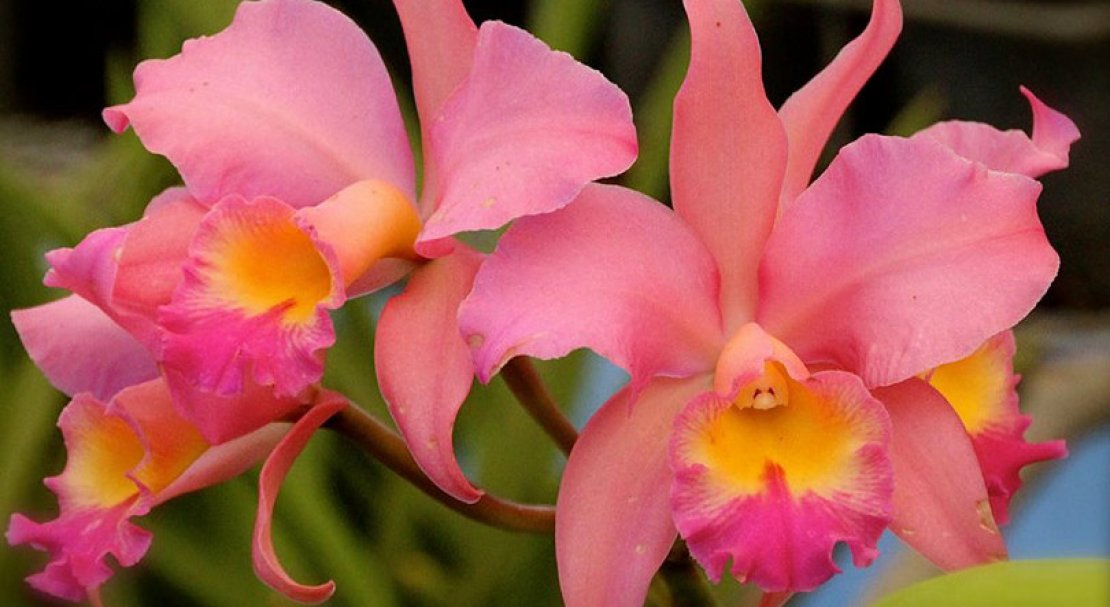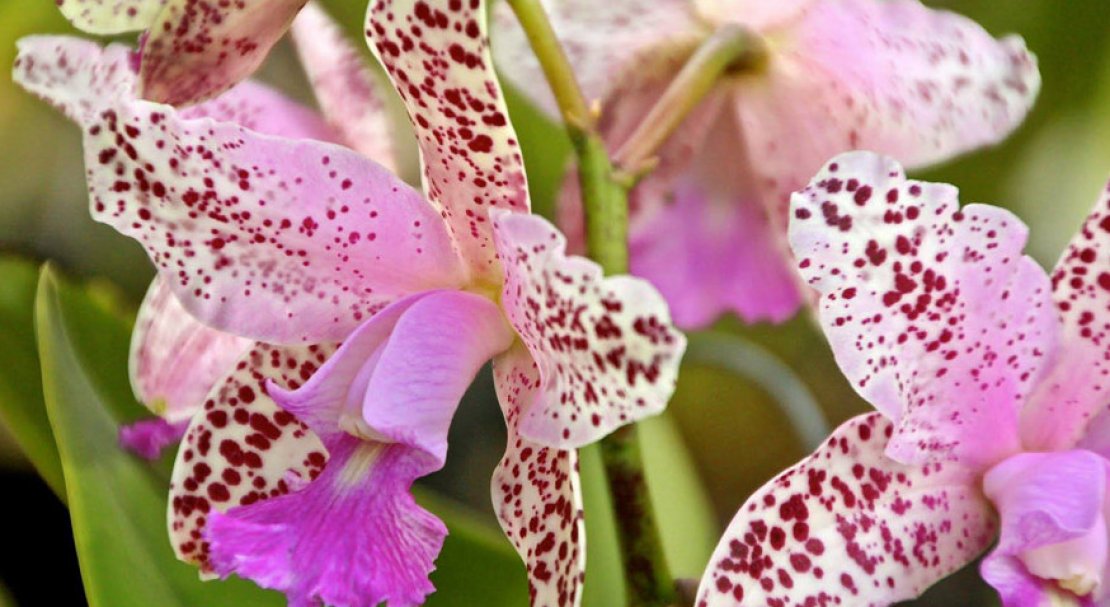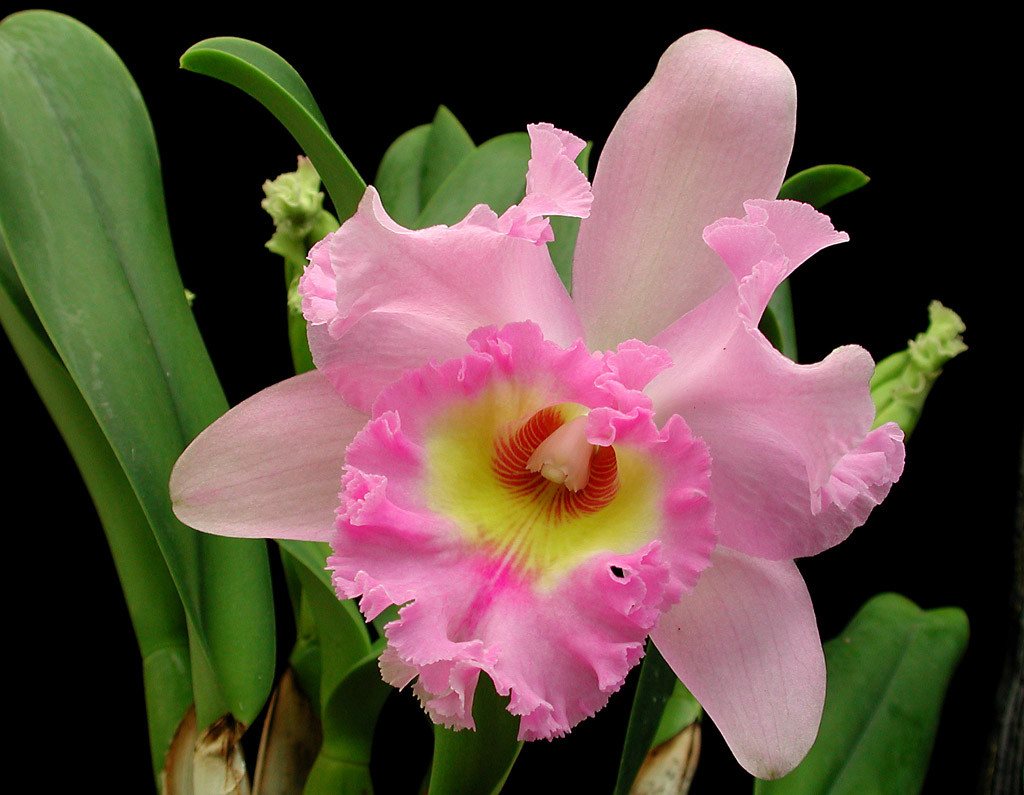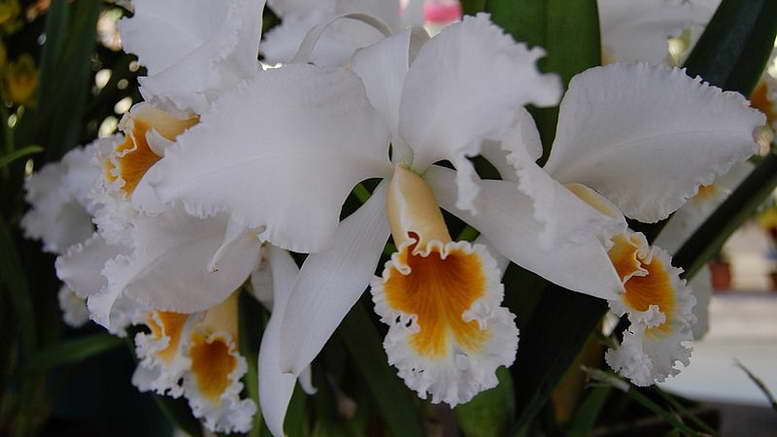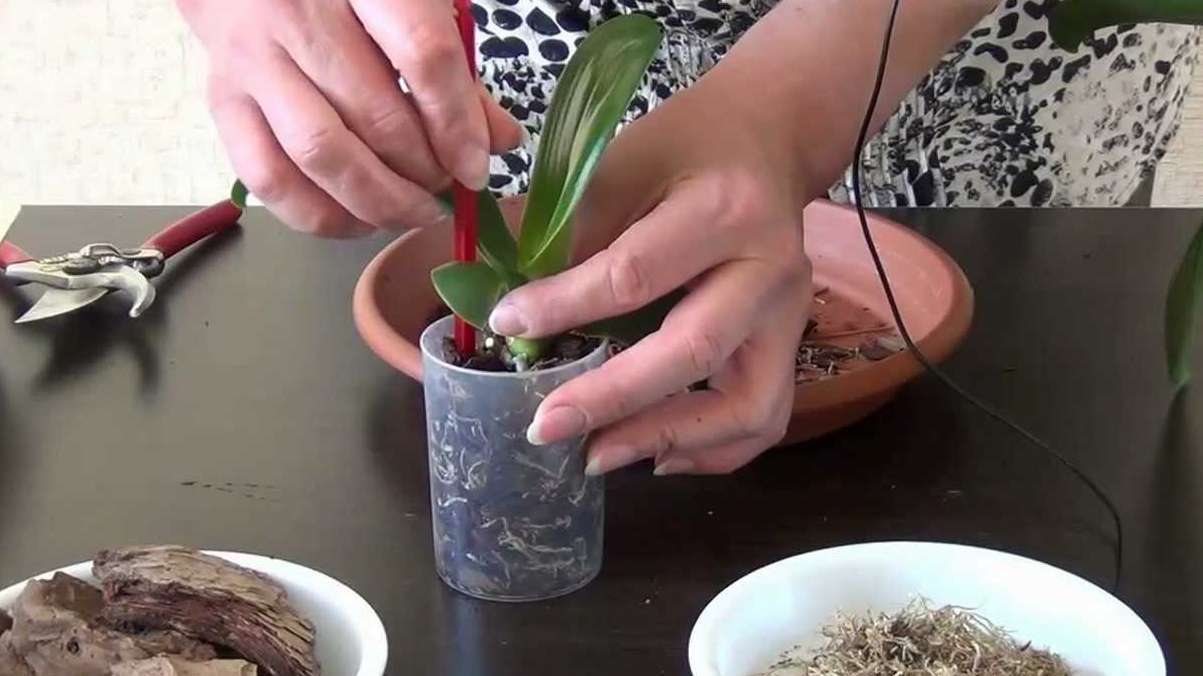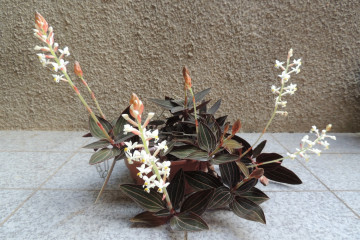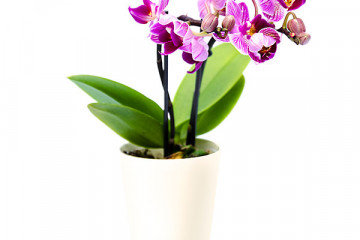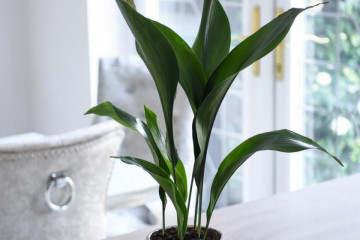Cattleya orchid: home care options and breeding methods
Content:
There are many types of orchids: Concolor, Ascocenda, Phalaenopsis, Epidendrum, Nobilior, etc. Among the most beautiful is the Cattleya orchid.
Varieties of Cattleya
There are many varieties of Cattleya orchids. Some of the most popular are the following.
Cattleya Mossi
The Cattleya Mossi Orchid (Variegat) is endemic to Venezuela. Its flowering occurs in the spring from February to May, depending on the specific place of growth.
Most often, the flower settles on the tops of trees and branches in forests at an altitude of 900 to 1500 meters above sea level. Its peduncle can reach 30 cm in length and bears 4 to 5 flowers with a diameter of 10 to 15 cm.
The petals of the Cattleya Mossi orchid can have colors: white, lilac, pink and purple, the lip is most often pink, lilac, burgundy, often with a bright yellow center. Flowers last for an average of 2 to 4 weeks. The dormant period of the orchid lasts from November to the end of February.
Cattleya yellow
Yellow Cattleya Orchid is a fairly common type of flower. This type of orchid is the national symbol of Colombia and Venezuela. The image of a flower (not always in yellow) is found on the coats of arms of cities, as well as on postage stamps.
Yellow is not the most common color in this variety of orchids. That is why the majority of experts especially highly appreciate the yellow Cattleya.
Cattleya Valkeriana
The habitat of Cattleya Valkeriana is Brazil. It grows in forests on trees, on rocks near streams and even on mountain cliffs. The Valkeriana peduncle includes 1 or 2 flowers.
The flower is about 10 cm in diameter, both petals and sepals are pink-purple in color. This variety is characterized by irregular flowering. The orchid can bloom at any time. In this case, the flowers last for about 6 weeks.
Cattleya Astilba Arends
In nature, Cattleya Astilba Arends can be found in East Asia and Southeast America. It is there, under the influence of monsoons, that the moisture-loving plant feels especially comfortable. The flowering time of Astilba Cattleya falls in July-August. The flowers have a deep purple-pink color. Plant height can reach 80 cm. Some specimens grow up to a meter.
There are other types of Cattleya orchids. For example, Cattleya sea breeze, Cattleya Schilleriana, Cattleya Doviana, Cattleya Baudelaire and some other equally interesting varieties.
Home care
Recently, the Cattleya flower has been in high demand. Its cultivation is practiced by many. For the plant to bloom and delight the eye, it is imperative to provide Cattleya with proper home care.
Lighting
For a flower such as Cattleya, care involves the organization of special lighting. To achieve abundant flowering, bright and indirect light is required.
With an excess of light, the foliage of the orchid will acquire a yellowish tint.In the autumn-winter period, it is recommended to organize additional illumination using fluorescent lamps.
Soil and fertilizing
The soil in which the Cattleya orchid is planted should be special. It should be based on a medium to small bark. Before planting the plant, the substrate should be pre-soaked (for about two days) so that the soil composition is sufficiently saturated with moisture. For air permeability, sphagnum moss and finely chopped foam are usually added to the substrate.
Since the plant does not like transplants, the soil composition must be prepared carefully. Otherwise, the adaptive period will drag on, and the orchid may even get sick.
Cattleya flower periodically needs fertilization. During an active growing season, the plant should be fed every week. The composition of top dressing must include phosphorus and potassium.
Nitrogen fertilizers should be added to the water for irrigation for those flowers that begin to grow after rest.
Temperature and humidity
Since Cattleya is a genus of heat-loving plants, during flowering, the temperature in the room should not be lower than +22 degrees (optimally +25 degrees). High humidity is another important condition for caring for a plant at home.
Periodically, the flower should be sprayed with water, avoiding drops on the inflorescences. It is recommended to cover the stems with moist moss - it retains moisture perfectly.
Other points of care
When the orchid fades, it is removed to a cool place with low light. Especially it is not required to take care of the plant during the rest period. At this time, it is not fertilized, watered or even watered to avoid the formation of rot.
Flowering cattleya
Blooming Cattleya is the moment for which this amazing orchid is grown. Many (even experienced) flower growers are often faced with a situation when for some reason the Cattleya does not bloom, although by all indications it feels great.
Most often, the problem of the lack of flowering of an orchid turns out to be associated with improper care: the temperature regime, humidity parameters are not maintained, the plant is often transplanted from place to place, etc. Sometimes the lack of flowers is associated with the age of the plant.
Reproduction of Cattleya
There is the only way to reproduce Cattleya at home - by dividing the rhizome.
The rhizome should be divided in such a way that 2-3 pseudobulbs with a sufficient number of living roots remain on each future independent plant. Places of cuts after the manipulation should be carefully treated with wood corner powder. Alcohol-containing antiseptics are not recommended in the most urgent way.
Planting and transplanting
The description of the embarkation and transplantation procedures does not differ too much. A few hours before the event, the root ball is soaked and moistened with fresh substrate. Next, the following steps are performed:
- The orchid is carefully removed from the container.
- Remove the old substrate.
- Straighten the roots with tweezers or sticks.
- The roots are washed under running water.
- If there are wounds, they are treated with coal.
- Drainage is laid in a pre-prepared pot, on top of it - pieces of bark (large).
- The seedling is placed in a pot.
- The rhizome is covered with the substrate, tamping slightly.
- If necessary, fix the plant.
- Water the seedling abundantly.
Cattleya is an amazingly beautiful orchid, so that it blooms and delights the eye for as long as possible, it is highly recommended to make every effort to ensure the flower is properly cared for.
